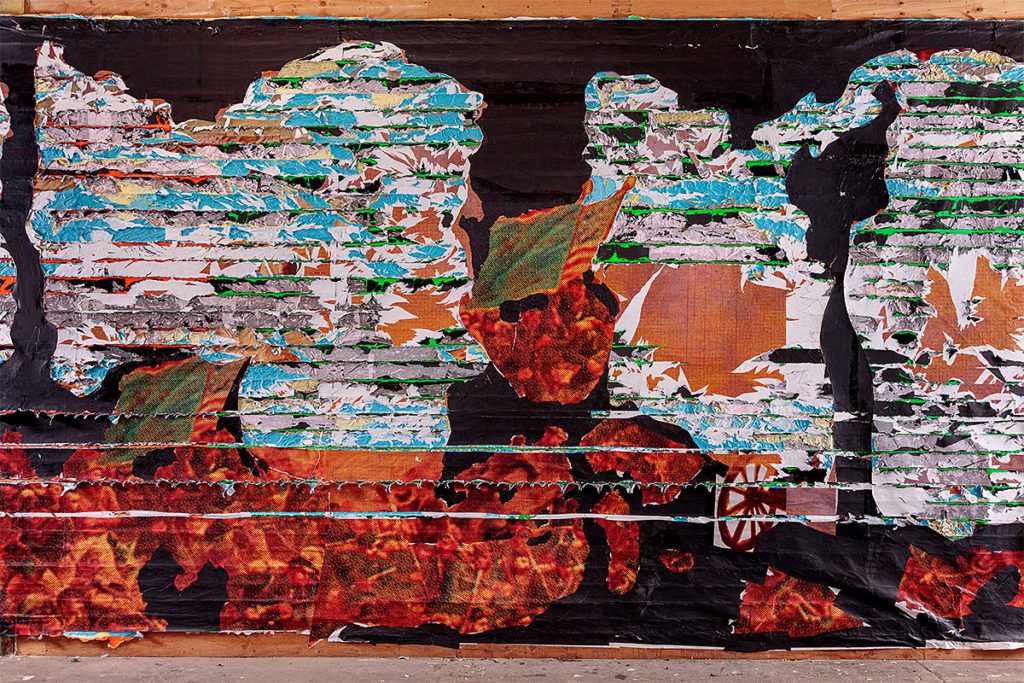‘Pickett’s Charge’ at the Hirshhorn
By • January 24, 2018 0 616

Our way of describing art in grand, esoteric terms developed strangely throughout the 20th century as American academics began mimicking the dense and syntactically exorbitant style of influential French philosophers and critics like Michel Foucault. The problem is that along with the influence of their ideas came the influence of their language, which Americans were largely seeing through a fractured prism of translated text.
I am not fluent in French, but from speaking with historians who are, I gather that the writings of Foucault are a lot more accessible and less gratuitously flowery when read in his native language.
With this needlessly complicated, apotheosizing style of discussing artistic achievement, the modern American art scene built a wall around itself, which both the university and museum systems maintained. They protected each other from the inside, naked kings strolling about and praising one another for their beautiful robes in the most brilliantly convoluted speech.
This is hyperbolic, and on the whole I am discussing a community of free-thinking, highly intelligent people. But the dangerous truth is that, for the most part, those who wish to be a part of any venerable system must bend to its codes of conduct.
I am not saying that artists and academics have been part of a massive avant-garde conspiracy to hock meaningless garbage to the public and convince them it’s sacred. But I know many capable, successful, rather brilliant people who abandoned careers in the arts in the 1970s and ’80s because of its stifling and disheartening culture of vapid self-aggrandizement.
Today, due in part to more recent capitalist influences within the arts and humanities, we are coming around to less culturally prohibitive dialogue as part of a broader art-consuming culture. But again, it is happening in a strange way. We have preserved the esoteric mysticism around fine art in a kind of collusive shorthand and Frankensteined it to an elementary-school-level inclusivity.
“This art,” we can now say, “is imbued with politics and history. But it is also abstract. It is about everything and it is also about nothing. Can you see its complex historical narratives that challenge us to consider the current political climate? Can you find the pictures hidden in the canvas? Can you see colors and shapes?”
This is a universal admissions badge meant to attract mass audiences by applauding a basic awareness of history and culture in the broadest possible terms. One result is that art has become almost impossible to criticize.
Which brings us to “Pickett’s Charge,” Mark Bradford’s monumental mixed-media installation, which wraps itself around the entire third floor of the Hirshhorn. It is a good work of art — visually arresting, imposing, aggressive, violent, powerful. Indeed, it is like a battle.
“Pickett’s Charge” is a direct response to a monumental American mural from 1883, the Gettysburg Cyclorama by French artist Paul Dominique Philippoteaux. A gorgeous 360-degree diorama of the Confederate infantry’s assault on Union forces in the final days of the Battle of Gettysburg, the cyclorama was one of the most popular entertainment spectacles of its era.
Bradford printed large-scale copies of the diorama and ripped them apart beyond recognition among endless layers of canvas, paper, bungee cord and cream-thick smears of bright paint.
The way Bradford created bold, organic, gracefully roiling motion through layers of media on such a large scale is striking. And the violence written across the painting’s latitudinal rips and tears speaks to a sort of environmental fissure that, if necessary, could be ascribed to our country’s ongoing sociopolitical schism.
But beyond the annular shape of the Hirshhorn for which it was designed, its origins in the United States and its shreds of vaguely identifiable imagery, I am not convinced that Bradford’s creation has any significantly deeper connection to its source material.
When artist Larry Rivers painted his version of “Washington Crossing the Delaware” in 1953 (based on the 1851 painting by Emanuel Leutze), he discussed his references to Napoleonic invasions and the parallels to American exceptionalism, particularly as a response to Abstract Expressionism. But it was specific, and it was slightly ironic. He did not deign to say that his painting “upends this notion of a faithful representation of history, revealing instead the complexity of historical narrative,” which is what the Hirshhorn’s wall text says about “Pickett’s Charge.”
The wall text also says that “Pickett’s Charge,” by juxtaposing pictorial fragments with abstract textures, disrupts “our notions of space and time.” I have no idea what that’s supposed to mean, but the way it is written assures me that it’s all there and that I understand it as much as I need to. And I guess that’s the point.
Art does not have to be mind-blowing all the time. It does not have to alter the fourth dimension to be valuable. And the expectation that it should is deluded. The existence of art, like war, is an inherent, constant and important piece of human nature. It is not necessary or right to assign it divine virtue — especially considering the broadly atheistic disposition of the art community at large.
I liked “Pickett’s Charge.” I am glad to see work like Bradford’s being made today. It functions powerfully as art and exhibits evident measures of craft and intellectual awareness. That is enough. It does not have to contain the entire history of the United States of America. And the institution that sponsors it should not claim that it does, even if its building is perfectly round.

